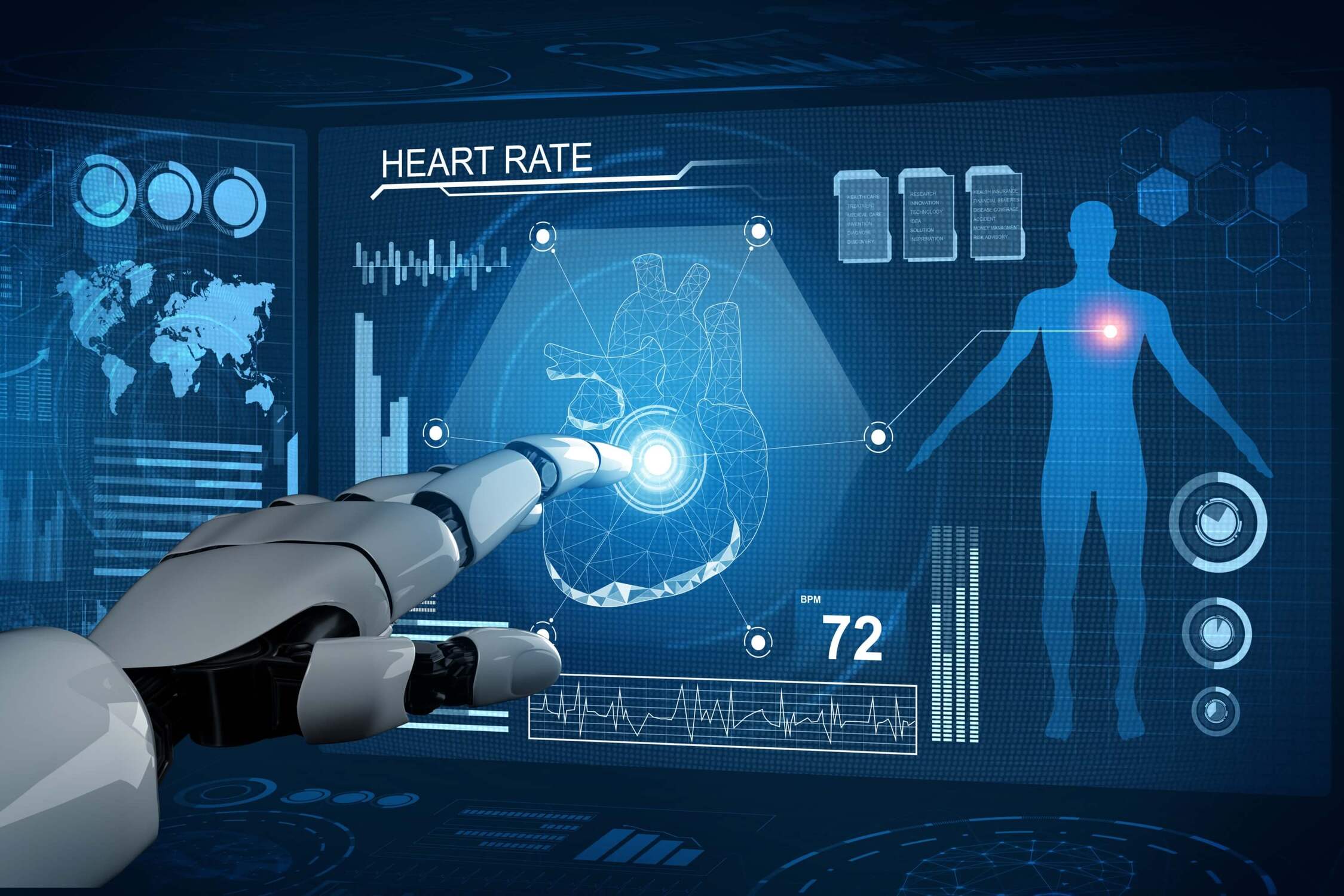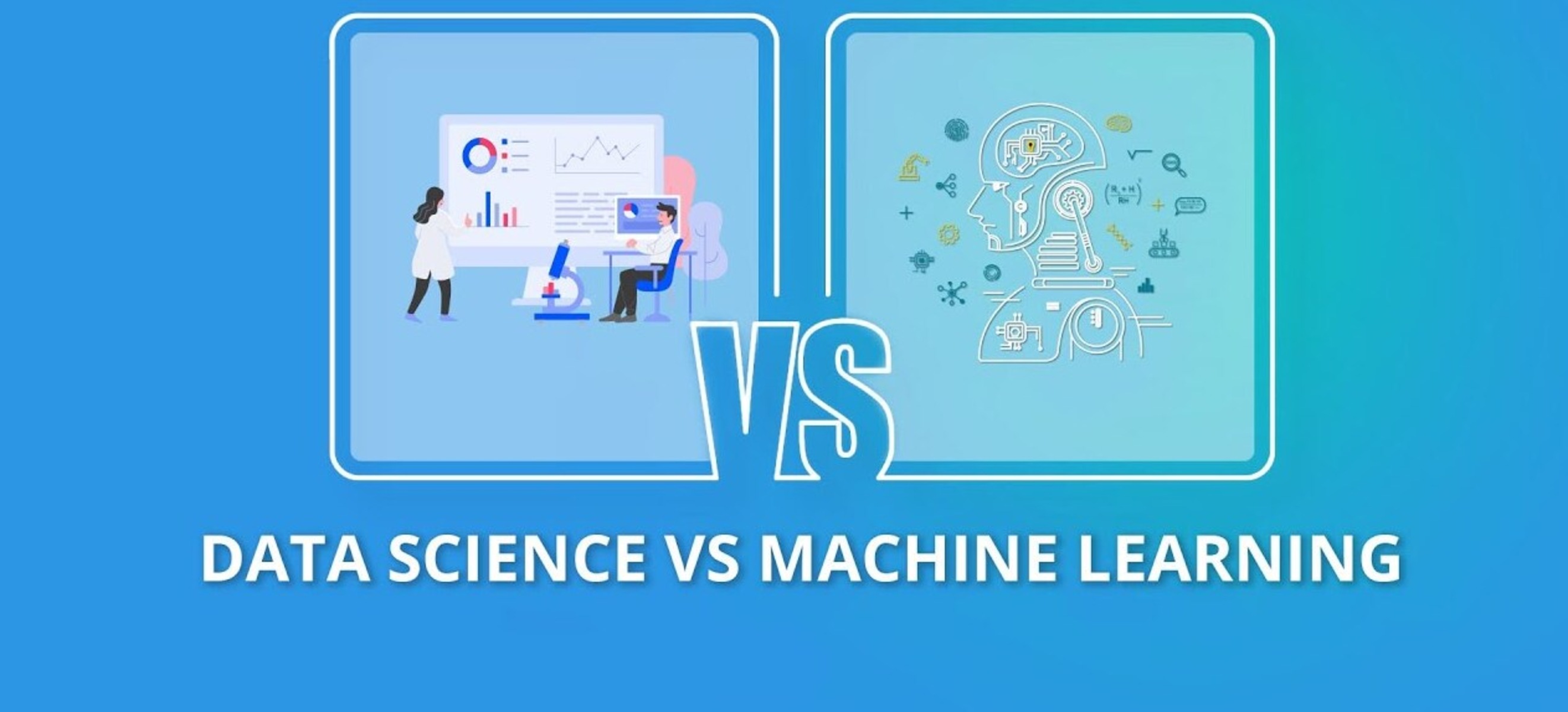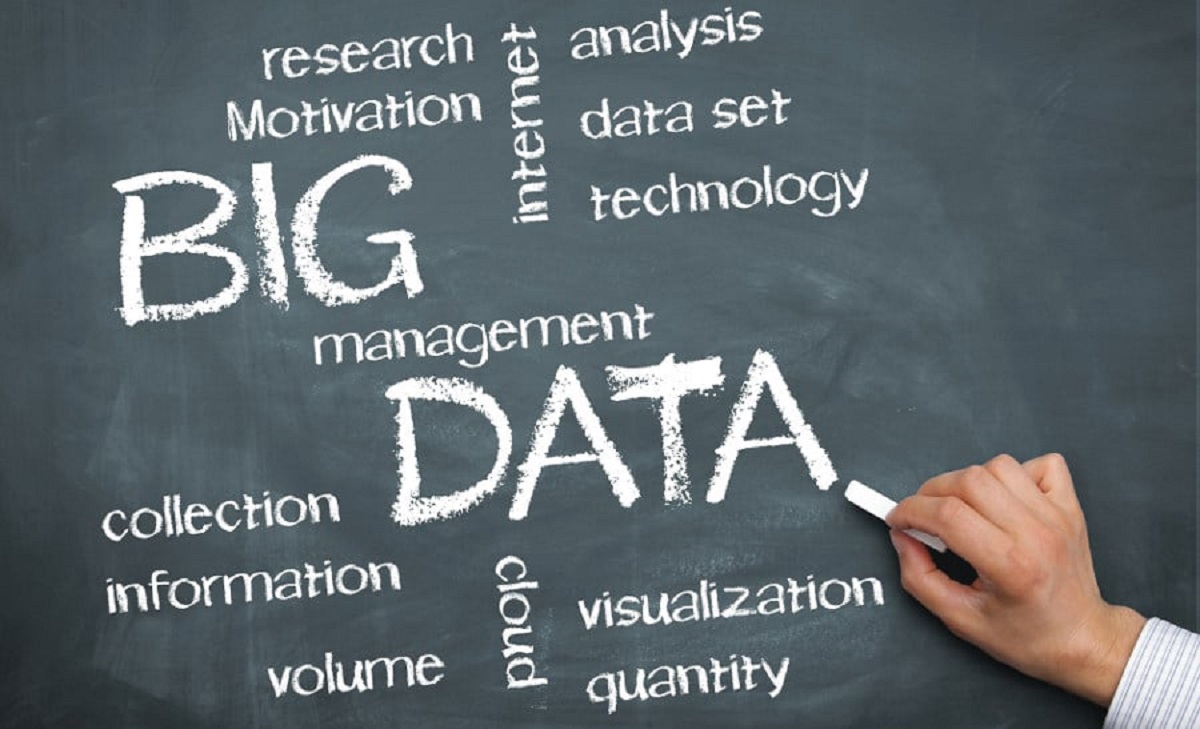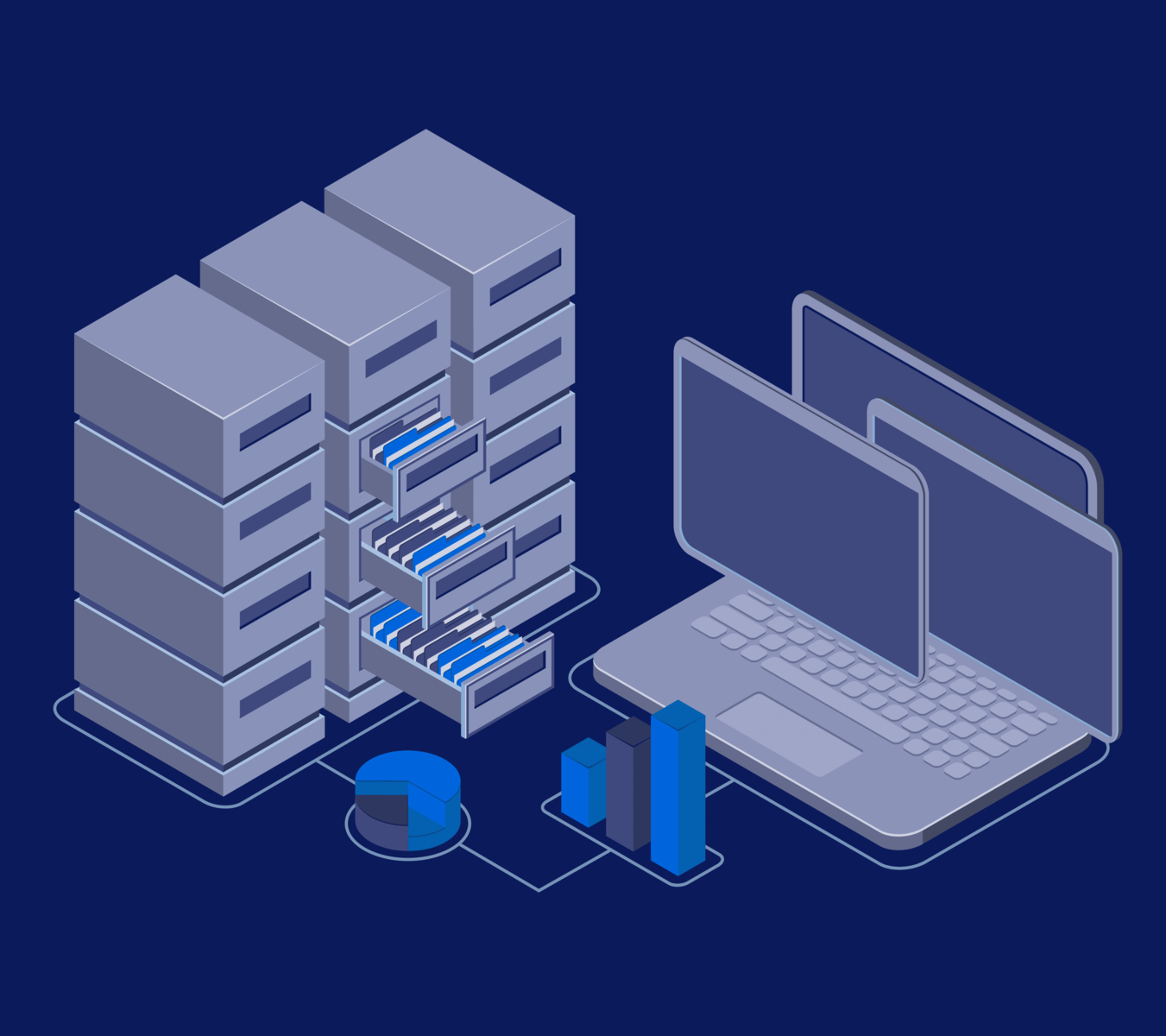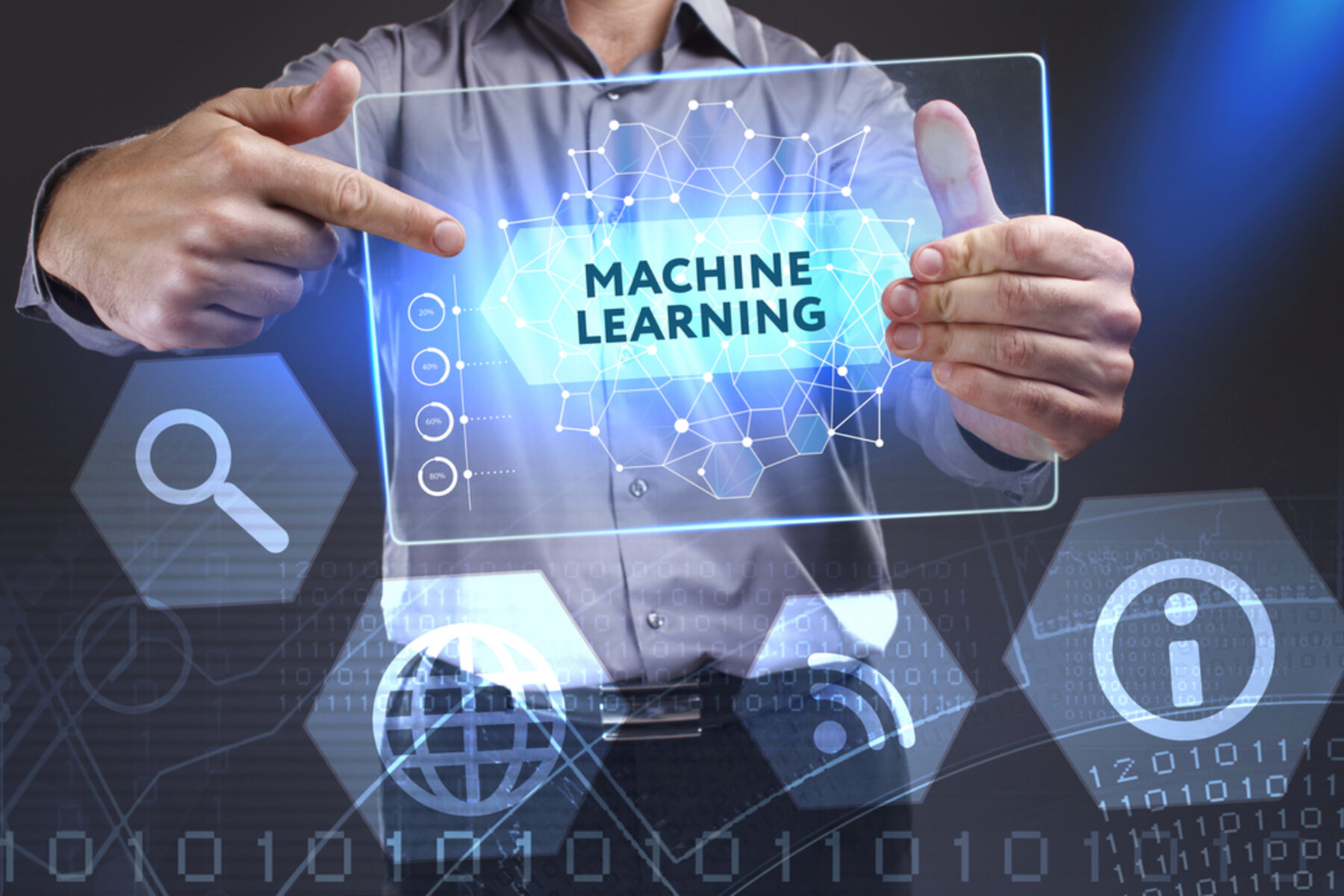Introduction
Machine learning, an innovative branch of artificial intelligence, is revolutionizing various industries and creating opportunities for advancements in multiple domains. Healthcare, in particular, has witnessed significant transformations with the integration of machine learning techniques. By leveraging the power of algorithms and data analysis, machine learning has brought about a paradigm shift in the way medical diagnosis, treatment, and patient care are approached.
At its core, machine learning involves training computer systems to learn from data and make intelligent decisions without explicit programming. This ability to analyze vast amounts of medical data, identify patterns, and make accurate predictions has paved the way for a range of applications in healthcare.
The applications of machine learning in healthcare are diverse, with potential benefits across the entire spectrum of medical services. From diagnostic tools to predictive analytics, treatment personalization, patient monitoring, and drug discovery, machine learning has the potential to improve patient outcomes, streamline workflows, and enhance decision-making.
With diagnostic tools, machine learning algorithms can analyze medical images, such as X-rays, MRIs, and CT scans, to help detect abnormalities and assist in accurate diagnoses. These algorithms can learn to identify patterns and anomalies in medical images, enabling rapid and precise identification of diseases and conditions.
Predictive analytics powered by machine learning algorithms enable early detection and risk assessment of diseases. By analyzing patient data, including medical records, genetic profiles, and lifestyle information, predictive models can flag individuals who are at a higher risk of developing certain conditions, allowing for preventive interventions and personalized healthcare plans.
Treatment personalization is another crucial application of machine learning in healthcare. By analyzing patient characteristics, genetic factors, and treatment outcomes, machine learning algorithms can provide insights into the most effective treatment options for individual patients. This personalized approach ensures that patients receive tailored treatments that maximize effectiveness and minimize side effects.
Patient monitoring is an essential aspect of healthcare, and machine learning algorithms can play a significant role in this area. By analyzing real-time patient data, such as vital signs, symptoms, and medical records, machine learning can identify signs of deterioration or changes in health conditions, alerting healthcare professionals to take appropriate actions promptly.
Machine learning is also transforming the field of drug discovery and development. By analyzing molecular structures, genetic data, and medical literature, algorithms can identify potential drug candidates and predict their effectiveness. This accelerates the development and testing of new drugs, reducing costs and time-consuming processes.
While the potential applications of machine learning in healthcare are vast, there are ethical considerations that must be addressed. Privacy, security, and biases in data are among the key concerns that need to be carefully managed to ensure the responsible and unbiased use of machine learning algorithms in healthcare.
The future outlook for machine learning in healthcare is promising. As technology continues to advance and the availability of healthcare data grows, machine learning algorithms will become even more powerful and accurate. This will result in improved diagnostic accuracy, personalized treatments, cost-effective healthcare solutions, and better overall patient care.
Understanding Machine Learning
Machine learning is a subset of artificial intelligence (AI) that focuses on enabling computers to learn and make predictions without being explicitly programmed. This technology relies on algorithms and statistical models to analyze large datasets and discover patterns, ultimately improving decision-making and performance. By leveraging machine learning techniques, computers can identify complex relationships and learn from past experiences to make accurate predictions or decisions in real-time. Understanding the fundamental concepts of machine learning is crucial to comprehend its applications and potential in various industries, including healthcare.
There are several key components of machine learning that shape its functionality. Firstly, training data is essential for teaching the machine learning algorithms and enabling them to learn from past examples. This data can include historical records, patient information, medical images, or any other relevant information that represents the problem domain. The quality, diversity, and size of the training data have a significant impact on the accuracy and reliability of the machine learning models.
The learning algorithm is another critical component of machine learning. This algorithm takes the training data and uses it to build a model that can make predictions or decisions. There are various types of learning algorithms, such as supervised learning, unsupervised learning, and reinforcement learning. Each algorithm has its strengths and limitations, depending on the nature of the problem at hand.
Supervised learning is the most common type of machine learning algorithm, where the model is trained using labeled data. The training data consists of inputs and corresponding correct outputs, allowing the algorithm to learn the mapping between the input and output variables. This type of learning is often used for tasks like classification, regression, and prediction.
Unsupervised learning, on the other hand, involves training a model without any labeled data. The algorithm is left to explore the data and identify any inherent patterns or structures. Clustering and dimensionality reduction are examples of unsupervised learning techniques that are useful for finding similarities in data or reducing its complexity.
Reinforcement learning is a different approach to machine learning that involves an agent learning from interactions with an environment. The agent takes actions in the environment and receives feedback in the form of rewards or penalties, allowing it to learn the best course of action to maximize its rewards. This type of learning is often used in scenarios where the optimal solution is not known, and exploration is required.
Once the machine learning model is trained, it can be deployed to make predictions or decisions on new, unseen data. This is known as the inference phase, where the model applies what it has learned from the training data to new inputs. The performance of the model is evaluated based on its accuracy, precision, recall, and other relevant metrics, which help assess its effectiveness in solving the problem.
Understanding the underlying concepts of machine learning provides valuable insights into the capabilities and limitations of the technology. As machine learning continues to advance, healthcare professionals can leverage its power to drive innovation, improve patient care, and optimize medical processes.
Machine Learning Applications in Healthcare
Machine learning is transforming the healthcare industry by offering a wide range of applications that improve patient outcomes, optimize workflows, and enable personalized treatments. The integration of machine learning techniques in healthcare has the potential to revolutionize how diseases are diagnosed, monitored, and treated. Here are some notable areas where machine learning is making a significant impact:
Diagnostic Tools: Machine learning algorithms can analyze medical images, such as X-rays, MRIs, and CT scans, to aid in the detection of diseases and abnormalities. By training on vast datasets of labeled images, these algorithms can learn to identify patterns and anomalies that may be missed by human observers. This improves the accuracy and efficiency of medical diagnoses, enabling early detection and timely interventions.
Predictive Analytics: Machine learning algorithms are employed to analyze patient data, including medical records, genetic profiles, and lifestyle information, to predict the likelihood of specific diseases or health conditions. By identifying risk factors and patterns, machine learning models can provide early warnings, allowing healthcare providers to implement preventive measures and strategies.
Treatment Personalization: Machine learning algorithms can analyze patient characteristics, genetic factors, and treatment outcomes to provide personalized treatment recommendations. By considering multiple variables, such as demographics, medical history, and genetic information, machine learning models can help healthcare professionals tailor treatment plans that are most effective and minimize potential risks or side effects.
Patient Monitoring: Machine learning algorithms can analyze real-time patient data, such as vital signs, symptoms, and medical records, to detect subtle changes in health conditions. By continuously monitoring and analyzing patient data, machine learning models can alert healthcare providers to any potential deterioration or complications, enabling timely interventions and proactive care.
Drug Discovery and Development: Machine learning plays a crucial role in accelerating the process of drug discovery and development. By analyzing molecular structures, genetic data, and medical literature, machine learning algorithms can identify potential drug candidates, predict their efficacy, and optimize drug-target interactions. This leads to faster and more efficient drug development, reducing costs and improving the success rate of bringing new drugs to market.
These applications of machine learning in healthcare are just a glimpse of its potential. As technology advances and more data becomes available, machine learning algorithms will continue to evolve and improve. This promises a future where medical decision-making is more accurate, treatment outcomes are optimized, and patient care is personalized.
Diagnostic Tools
Machine learning algorithms have revolutionized diagnostic tools in healthcare by enhancing the accuracy and efficiency of disease detection. Traditionally, the interpretation of medical images, such as X-rays, MRIs, and CT scans, relied heavily on the expertise of radiologists. However, with the integration of machine learning, these imaging modalities can now be analyzed with unprecedented precision, aiding in early and accurate diagnosis.
Machine learning algorithms excel in analyzing complex data and identifying patterns that may be difficult for human observers to detect. By training on vast datasets of labeled medical images, these algorithms can learn to recognize subtle abnormalities or indicators of diseases that may not be immediately evident to human eyes. This improves the diagnostic accuracy and can have a significant impact on patient outcomes.
One application of machine learning in diagnostic tools is the detection of cancer. Algorithms can analyze mammograms, for example, to identify early signs of breast cancer, enabling prompt intervention and potentially saving lives. The algorithms learn from thousands of images and can detect minute changes in breast tissue, such as calcifications or masses, that may be indicative of malignancy.
Machine learning algorithms can also assist in the diagnosis of conditions such as lung diseases, heart diseases, and neurological disorders. By analyzing CT scans, electrocardiograms, and brain imaging data, these algorithms can identify specific patterns that are associated with certain diseases. This enables earlier and more accurate diagnoses, allowing healthcare professionals to initiate appropriate treatment plans sooner.
Another area where machine learning is making significant strides is in pathology. Histopathology slides, which require manual examination under a microscope, can be time-consuming and prone to human error. Machine learning algorithms can analyze these slides to detect abnormal cells, patterns, or other indicators of disease, assisting pathologists in their diagnoses. This not only improves efficiency but also enhances the objectivity of pathology assessments.
The benefits of machine learning in diagnostic tools extend beyond image analysis. Natural language processing techniques, another application of machine learning, can analyze medical reports, research papers, and clinical notes to extract relevant information and assist in diagnosis. This enables healthcare providers to access critical information faster and facilitates more accurate decision-making.
While machine learning algorithms in diagnostic tools show immense promise, it is important to maintain a collaborative approach that combines the expertise of healthcare professionals with the power of machine learning technology. Human oversight and validation of algorithmic results are paramount to ensure the accuracy and reliability of diagnoses. Furthermore, ongoing learning and improvement of algorithms are necessary to stay up to date with new medical findings and advancements.
As machine learning continues to progress, diagnostic tools in healthcare will become even more precise, efficient, and accessible. This will result in earlier detection of diseases, improved treatment planning, and ultimately, better patient outcomes.
Predictive Analytics
Predictive analytics powered by machine learning is transforming the healthcare industry by enabling early detection, risk assessment, and personalized interventions. By analyzing vast amounts of patient data, including medical records, genetic profiles, and lifestyle information, machine learning algorithms can identify patterns and trends that help predict the likelihood of future health events.
One key application of predictive analytics in healthcare is the identification of individuals at high risk of developing specific diseases. Machine learning algorithms can analyze comprehensive patient data to identify risk factors and create predictive models. These models can then be used to flag individuals who are more likely to develop certain conditions, such as diabetes, cardiovascular diseases, or certain types of cancer. This allows healthcare providers to design preventive strategies, implement targeted interventions, and provide personalized healthcare plans to reduce the risk and improve outcomes for patients.
Predictive analytics is also valuable in identifying potential complications and adverse events in healthcare settings. By analyzing patient data in real-time, such as vital signs, laboratory results, and demographic factors, machine learning algorithms can identify early warning signs of deteriorating health conditions or potential complications. This enables healthcare providers to intervene promptly and prevent adverse events, leading to better patient care and improved patient safety.
Another important application of predictive analytics in healthcare is the optimization of treatment plans. Machine learning algorithms can analyze patient data, including medical history, treatment outcomes, and genetic information, to create personalized treatment recommendations. By considering various factors, such as an individual’s response to certain medications or the presence of specific genetic markers, machine learning models can suggest the most effective treatment options for each patient. This personalized approach improves treatment outcomes, reduces adverse effects, and enhances patient satisfaction.
Predictive analytics is also playing a crucial role in resource allocation and capacity planning in healthcare institutions. By analyzing historical data and applying machine learning algorithms, healthcare providers can predict patient volumes, anticipate demand for specific services, and optimize resource allocation accordingly. This allows healthcare institutions to better manage their resources, reduce waiting times, and improve overall operational efficiency.
While predictive analytics offers numerous benefits in healthcare, there are challenges and considerations that need to be addressed. Data quality, privacy, and ethics are critical factors in ensuring the accuracy and responsible use of predictive models. It is imperative to have robust data governance policies in place to maintain data integrity, protect patient privacy, and mitigate biases that may arise from imbalanced or incomplete datasets.
As machine learning algorithms continue to improve and more data becomes available, the predictive analytics capabilities in healthcare will continue to evolve. This will result in more accurate risk assessments, early interventions, and personalized healthcare strategies, ultimately leading to better patient outcomes and a more efficient healthcare system.
Treatment Personalization
Treatment personalization is a critical aspect of healthcare, and machine learning is playing an instrumental role in tailoring treatments to individual patients. By analyzing patient characteristics, genetic factors, and treatment outcomes, machine learning algorithms can provide insights that help healthcare professionals make more informed decisions about the most effective and personalized treatment options.
Traditionally, healthcare treatments followed a one-size-fits-all approach, where patients with similar conditions would receive the same treatments. However, this approach has limitations because individuals may respond differently to treatments due to variations in genetic makeup, lifestyle factors, and other personal characteristics. Machine learning algorithms address these limitations by leveraging data to identify patterns and generate personalized treatment recommendations.
Machine learning algorithms can analyze large amounts of patient data, including medical records, lab results, imaging data, and genetic profiles, to identify patterns and correlations. This data-driven approach enables the identification of specific patient characteristics, biomarkers, or genetic markers that may indicate the likelihood of treatment success or help predict adverse reactions.
With this information, healthcare professionals can make more informed decisions regarding treatment options, dosage, and the duration of therapy. For example, in oncology, machine learning algorithms can analyze genetic data to identify specific mutations or biomarkers that make certain patients more likely to respond to a particular type of treatment. This enables oncologists to personalize cancer treatment plans, resulting in improved outcomes and reduced side effects.
Machine learning algorithms can also assist in medication management by predicting the efficacy and potential side effects of specific drugs based on patient characteristics. By considering factors such as age, weight, genetics, and medical history, machine learning models can provide tailored recommendations for drug selection, dosage adjustments, and treatment duration. This personalized approach to medication management leads to better treatment outcomes and improved patient experiences.
Another application of treatment personalization through machine learning is in mental health. Algorithms can analyze patient data, including symptoms, demographic information, treatment history, and genetic markers, to create personalized treatment plans for mental health conditions such as depression, anxiety, and schizophrenia. This approach ensures that patients receive optimized treatment strategies, leading to more effective management of their mental health conditions.
While treatment personalization through machine learning offers great potential, ethical considerations, privacy, and data security must be addressed. Patients should have control over their data and be provided with clear, transparent information about how their data is being used. Additionally, healthcare professionals must ensure that algorithms are validated and continually updated to reflect the latest medical knowledge and advancements.
As machine learning continues to evolve and more patient data becomes available, the potential for treatment personalization will only expand. This approach has the potential to revolutionize healthcare by improving treatment outcomes, reducing adverse effects, and providing patients with more individualized care.
Patient Monitoring
Patient monitoring plays a vital role in healthcare, and machine learning algorithms are revolutionizing this aspect by enabling real-time analysis of patient data for enhanced care and timely interventions. By continuously monitoring patient vitals, symptoms, and medical records, machine learning algorithms can identify patterns and changes that may indicate deterioration or the need for immediate medical attention.
Machine learning algorithms can process a vast amount of real-time patient data and analyze it for abnormalities or trends. By learning from historical patient data, these algorithms can identify deviations from established patterns, enabling healthcare professionals to intervene proactively and prevent complications.
One crucial application of machine learning in patient monitoring is in the detection of early warning signs for various medical conditions. By analyzing vital signs such as heart rate, blood pressure, and respiratory rate, machine learning algorithms can detect subtle changes that may indicate the early stages of infections, cardiovascular issues, or respiratory disorders. This early detection allows healthcare providers to take necessary actions promptly, potentially preventing adverse outcomes and improving patient care.
Machine learning algorithms can also analyze continuous glucose monitoring data for patients with diabetes. By detecting trends and patterns in blood glucose levels, algorithms can alert patients and healthcare providers to variations outside the desired range. This allows for timely adjustments in insulin dosages or lifestyle modifications, helping patients maintain better control over their blood sugar levels and reduce long-term complications.
In critical care settings, machine learning algorithms can analyze a combination of vital signs, laboratory data, and patient history to predict the likelihood of a patient developing sepsis or other life-threatening conditions. By continuously monitoring and analyzing patient data, algorithms can flag patients who are at a higher risk, alerting healthcare professionals to initiate appropriate treatments or interventions.
Machine learning algorithms also have the potential to enhance patient monitoring in remote and home healthcare settings. With the use of wearable devices and sensors, patients can continuously transmit their vital signs and other relevant data to healthcare professionals. Machine learning algorithms can then analyze this data in real-time, identifying any deviations or abnormalities and triggering alerts for immediate attention. This remote monitoring approach enables proactive care, reduces hospital readmissions, and improves patient comfort and convenience.
While machine learning algorithms in patient monitoring offer great promise, careful attention must be given to data privacy and security. Patient data should be protected, and access to sensitive information must be strictly regulated to maintain patient confidentiality.
As machine learning continues to advance, patient monitoring will become more precise, proactive, and integrated into healthcare systems. This technology holds the potential to revolutionize patient care by enabling early detection of problems, reducing the burden on healthcare providers, and improving patient outcomes.
Drug Discovery and Development
Machine learning is transforming the field of drug discovery and development by significantly accelerating the process of identifying potential drug candidates and optimizing their effectiveness. By analyzing molecular structures, genetic data, and medical literature, machine learning algorithms are revolutionizing the way new drugs are discovered, tested, and brought to market.
Traditionally, drug discovery has been a time-consuming and costly process, often taking years and involving extensive laboratory testing. However, machine learning algorithms offer a more efficient and cost-effective approach. These algorithms can analyze large datasets of chemical compounds, biological targets, and drug interactions to identify patterns and predict the effectiveness of potential drug candidates.
Machine learning algorithms have played a crucial role in identifying new drug targets. By analyzing vast amounts of genetic and proteomic data, algorithms can identify specific genes, proteins, or cellular pathways that are associated with diseases. This enables researchers to develop drugs that target these specific disease mechanisms, increasing the likelihood of successful treatments.
Another significant application of machine learning in drug discovery is virtual screening. By analyzing the molecular structures of known drugs and their interactions with target proteins, machine learning algorithms can predict the likelihood of success for similar compounds. This approach allows researchers to screen thousands of compounds quickly and prioritize the most promising ones for further investigation, saving time and resources.
Machine learning algorithms also play a crucial role in optimizing drug-target interactions and predicting drug efficacy. These algorithms can analyze molecular structures and predict how a drug compound will interact with specific proteins or receptors in the body. By simulating these interactions, researchers can better understand the mechanisms of action and potential side effects of a drug, helping to guide the drug development process.
Furthermore, machine learning algorithms can assist in predicting drug toxicity and identifying potential adverse effects. By analyzing chemical structures and molecular properties, these algorithms can flag compounds that may have undesirable toxic effects, reducing the risk of selecting drugs with harmful side effects for further development.
Lastly, machine learning can contribute to the repurposing of existing drugs. By analyzing large datasets of drug compounds, disease indications, and patient data, algorithms can identify potential new uses for drugs that have already been approved for other conditions. This repurposing approach offers a faster and more cost-effective way to bring new treatments to market.
While machine learning in drug discovery and development holds great promise, there are challenges that need to be addressed, such as the ethical use of patient data, complex regulatory processes, and ensuring the safety and reliability of algorithms. Collaboration between researchers, pharmaceutical companies, and regulatory authorities is crucial to overcome these challenges and harness the full potential of machine learning in drug discovery.
As machine learning algorithms continue to evolve and more data becomes available, the drug discovery and development process will become more efficient, cost-effective, and targeted. This will result in the development of new and innovative treatments that can improve patient outcomes and address unmet medical needs.
Ethical Considerations
Machine learning has the potential to revolutionize healthcare, but it also raises important ethical considerations that must be addressed to ensure responsible and ethical use of this technology.
Data Privacy: One of the primary ethical concerns is the privacy and security of patient data. Machine learning algorithms depend on vast amounts of data, including medical records, genetic information, and personal details. It is essential to have robust data governance policies in place to protect patient privacy, ensure data security, and establish clear guidelines for data sharing and access.
Bias and Fairness: Machine learning algorithms are trained on historical data, which may not always be representative or free from biases. Biased data can result in biased algorithms, leading to unequal healthcare outcomes. It is crucial to actively identify and address biases in training data to ensure that machine learning algorithms do not perpetuate existing disparities or discriminate against certain patient groups.
Transparency and Explainability: Machine learning algorithms are often treated as black boxes, making it difficult to understand how they arrive at their decisions. Healthcare professionals and patients need to have access to information about how these algorithms work and the factors that contribute to their predictions. Increased transparency and explainability are essential to foster trust in the technology and ensure accountability.
Informed Consent: When using patient data to train machine learning algorithms, informed consent becomes crucial. Patients should have a clear understanding of how their data will be used, the potential risks and benefits, and the ability to opt-out if they wish. Informed consent empowers patients to make informed decisions about the use of their data and ensures respect for their autonomy and privacy.
Human Oversight: While machine learning algorithms can analyze vast amounts of data and make predictions, human oversight is vital in healthcare settings. Healthcare professionals should remain involved in decision-making processes, validate algorithmic results, and use their clinical expertise to interpret and implement the recommendations generated by the algorithms.
Accountability and Regulation: As machine learning algorithms become more prevalent in healthcare, it is important to establish accountability and regulations to ensure that these technologies are used responsibly. Regulatory bodies should work closely with industry experts, researchers, and healthcare providers to develop guidelines and standards for the ethical use of machine learning in healthcare.
Addressing these ethical considerations requires collaboration among healthcare professionals, researchers, policymakers, and technology developers. By prioritizing patient privacy, fairness, transparency, informed consent, human oversight, and accountability, we can harness the full potential of machine learning in healthcare while upholding ethical values and patient well-being.
Future Outlook
The future outlook for machine learning in healthcare is incredibly promising. As technology continues to advance, and the availability of healthcare data grows, machine learning algorithms are expected to play an increasingly critical role in improving patient care, optimizing healthcare processes, and advancing medical research.
Advanced Diagnostics: Machine learning will continue to enhance diagnostic tools, leading to faster, more accurate disease detection. Algorithms will become even more proficient in analyzing medical images, such as X-rays and MRIs, and identifying subtle abnormalities that may go unnoticed by human observers. This will enable earlier and more precise diagnoses, improving patient outcomes and reducing unnecessary invasive procedures.
Personalized Treatments: Treatment personalization is set to become the norm rather than the exception. By leveraging machine learning algorithms, healthcare professionals will be able to analyze vast amounts of patient data and genetic profiles to tailor treatments to individual patients. This individualized approach will optimize treatment outcomes, minimize adverse effects, and improve patient satisfaction.
Predictive Analytics and Preventive Care: The power of machine learning in predictive analytics will continue to grow. Algorithms will become more sophisticated in analyzing patient data to identify individuals at high risk of developing certain diseases. This will enable preventive measures and targeted interventions, shifting healthcare from a reactive approach to a more proactive and preventive one.
Remote Patient Monitoring: Machine learning algorithms will facilitate remote patient monitoring, allowing healthcare providers to monitor patients in real-time from their homes. This will improve accessibility to healthcare, reduce hospital visits, and enable timely interventions. Wearable devices and sensors will collect patient data, which machine learning algorithms will analyze to detect anomalies and trigger alerts for healthcare providers.
Smart Healthcare Systems: The integration of machine learning algorithms into healthcare systems will optimize operational efficiency. Algorithms will assist in resource allocation, patient scheduling, and workflow management, leading to streamlined processes and reduced waiting times. These smart healthcare systems will enable healthcare providers to deliver quality care in a more efficient manner.
Targeted Drug Discovery: Machine learning algorithms will continue to transform the drug discovery and development process. Through the analysis of complex biological and molecular data, such as genomics and proteomics, algorithms will identify novel drug targets and accelerate the discovery of new therapies. This will lead to the development of more effective treatments for various diseases.
Ethical and Regulatory Considerations: The ethical and regulatory frameworks surrounding machine learning in healthcare will continue to evolve. Policies will be developed to standardize data privacy, ensure fairness, transparency, and accountability in algorithmic decision-making, and address concerns related to bias and discrimination. Continuous collaboration among stakeholders will be crucial in defining these standards and guidelines.
In summary, the future outlook for machine learning in healthcare is marked by immense potential to enhance diagnostics, personalize treatments, enable preventive care, optimize healthcare systems, revolutionize drug discovery, and uphold ethical standards. As technology continues to advance and ethical considerations are addressed, machine learning will play an increasingly central role in improving patient outcomes and transforming healthcare delivery.
Conclusion
Machine learning has emerged as a powerful tool in the field of healthcare, offering various applications that improve diagnostics, treatment outcomes, patient monitoring, and drug discovery. By leveraging the capabilities of machine learning algorithms, healthcare professionals can analyze vast amounts of data, identify patterns, and make accurate predictions, ultimately enhancing patient care and medical decision-making.
Diagnostic tools powered by machine learning algorithms have revolutionized disease detection by enabling early and precise diagnoses through the analysis of medical images. Predictive analytics has paved the way for personalized interventions, allowing healthcare providers to identify individuals at high risk of developing certain diseases and take preventive measures to mitigate those risks.
Patient monitoring has been greatly enhanced through machine learning, enabling continuous analysis of patient data and the detection of early signs of deterioration. This real-time monitoring contributes to timely interventions and improved patient outcomes.
In the realm of drug discovery and development, machine learning algorithms have accelerated the identification of potential drug candidates, optimized drug-target interactions, and facilitated the repurposing of existing drugs. This holds great promise for the development of novel and effective treatments.
However, the integration of machine learning in healthcare also poses important ethical considerations. Safeguarding patient privacy, addressing biases and fairness, ensuring transparency and human oversight, and establishing regulatory guidelines are crucial in harnessing the full potential of machine learning while upholding ethical values.
The future outlook for machine learning in healthcare is exceptionally promising. As technology continues to evolve and more data becomes available, machine learning algorithms will become even more accurate, personalized, and efficient. This will lead to improved diagnostics, better treatment outcomes, optimized healthcare processes, and advancements in medical research.
With collaborative efforts among healthcare professionals, researchers, policymakers, and ethical considerations at the forefront, machine learning has the potential to revolutionize healthcare delivery, resulting in better patient care, enhanced patient outcomes, and a more efficient healthcare system.







